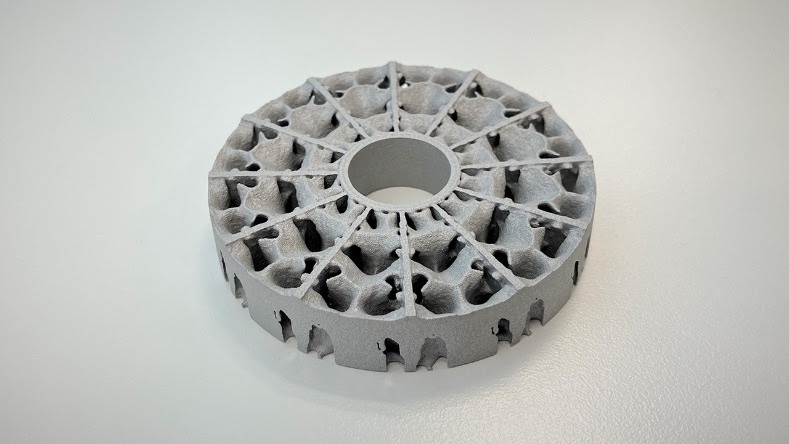Two powerhouses in additive manufacturing (AM) and global industry at-large, Ricoh and Siemens, have started collaborating to leverage Siemens Digital Industries Software and the Siemens’ Additive Manufacturing Network for Ricoh’s metal binder jetting (MBJ) platform. The beginning of the collaboration involves Ricoh’s use of Siemens’ digitalization solutions to optimize its MBJ workflow for aluminum parts output.
Via Siemens’ Brownfield Connectivity solution, Ricoh has started to monitor, collect, and store data related to the quality control of each step of the MBJ process. Both Siemens and Ricoh are especially interested in commercializing the solutions they’ve jointly developed for electrification applications, and EVs, in particular.

In a press release about the collaboration between Siemens and Ricoh for digital workflow management of MBJ for aluminum parts, Zvi Feuer, senior VP of digital manufacturing software at Siemens Digital Industries Software, said, “The production of aluminum parts is a holy grail for the additive industry and we’re delighted that Ricoh has chosen Siemens’ Additive Manufacturing Network capabilities from the Siemens Xcelerator portfolio of industry software to help them commercialize a much sought-after process. We will be able to apply Ricoh’s expertise in the digital workflow management of MBJ for aluminum parts. [AM] with our knowledge and experience in delivering additive-specific operations management across a wide spectrum of industries — from order capture, production planning, and manufacturing to part delivery transaction closure.”
Tokutaro Fukushima, GM of the AM Business Center in Ricoh’s Futures Business Unit, said, “Ricoh will enable our customers to manufacture innovative aluminum components that have never been produced before by any process and will work with them to realize new customer value in the area of electrification of EVs and other forms of mobility.”

This collaboration, as it seems to be the case whenever Siemens is involved in AM, brings together the most important threads that are currently the focus of the sector. Upon reflection of the last year of AM progress, MBJ for decarbonization, as well as digital traceability of parts in every area of AM, are two of the themes from 2023 that seem poised to become even more fundamental to the sector’s activities in 2024.
Along those lines, then, it is intriguing to see those separate themes explicitly combined in this one collaboration, particularly since the primary market involved is EVs — another major theme from 2023 that should only gain further traction next year. While the Siemens Digital Industries Software VP quoted above is certainly correct that aluminum parts are “a” holy grail for AM, “the” holy grail, from a long-term perspective, may very well be the deployment of AM for EV supply chains.
It is not just the size of the EV industry that makes this important. The manufacturing ecosystem of EVs has a qualitative impact that will be incalculable on other advanced manufacturing areas. The EV market’s goals are to reduce carbon emissions. The following are some examples of how to get started: scale up The following are some examples of how to get started: incorporate automation to the fullest extent possible — all while digitally tracking the process at every step in the supply chain. The EV market will be a model for other industries around the world.
Subscribe to Our Email Newsletter
Receive information and offers about 3D printing from third-party vendors.




